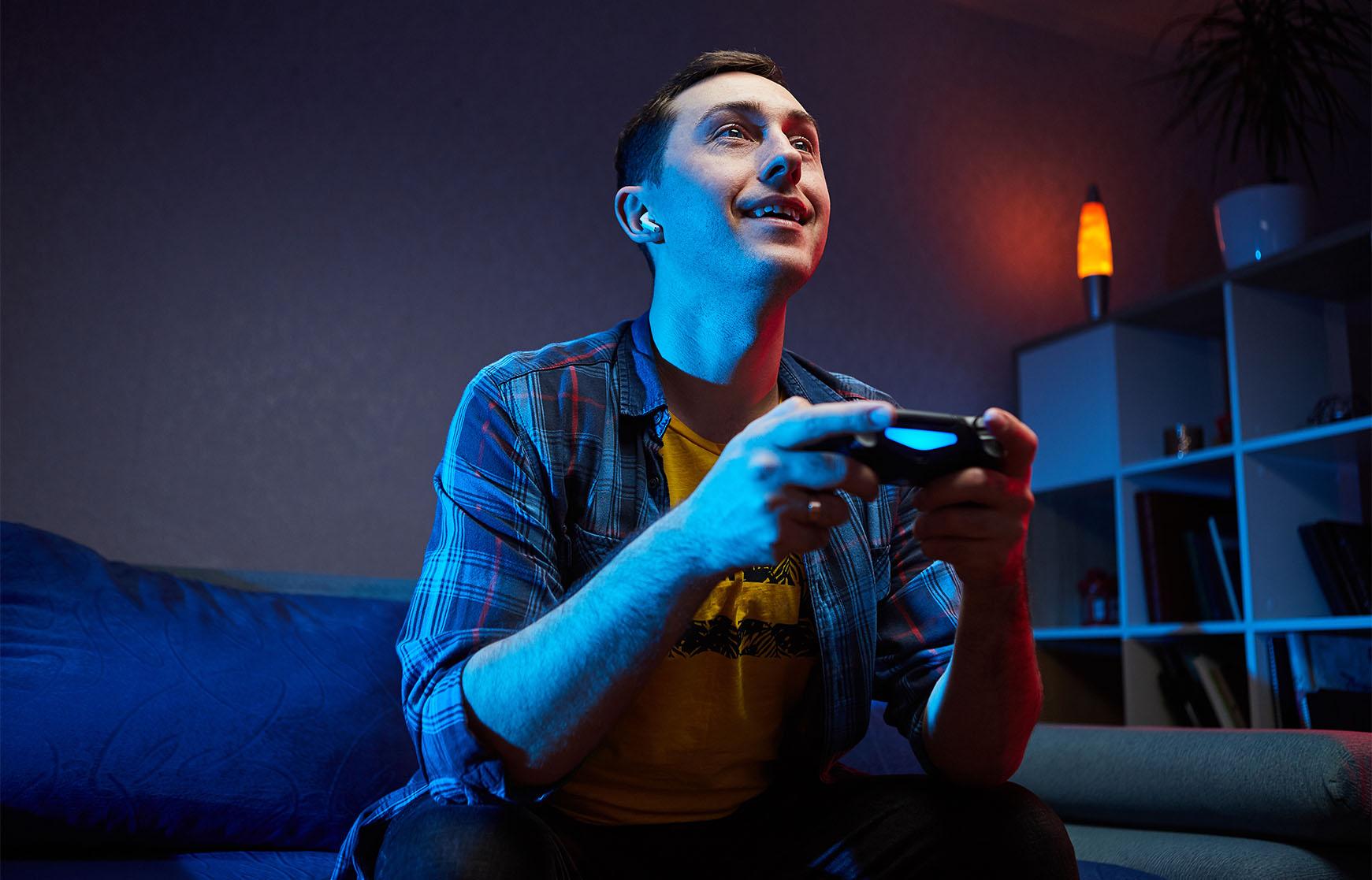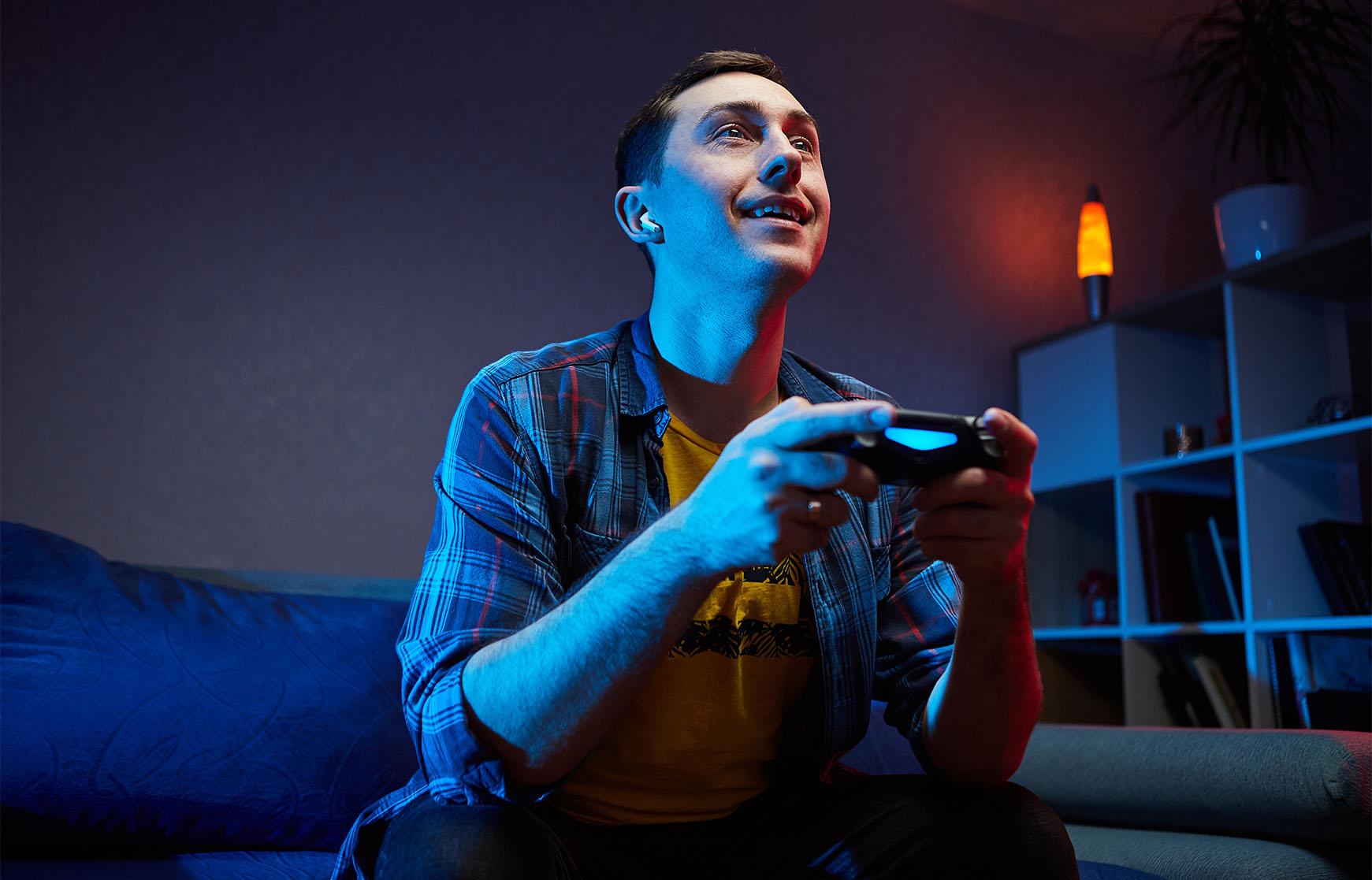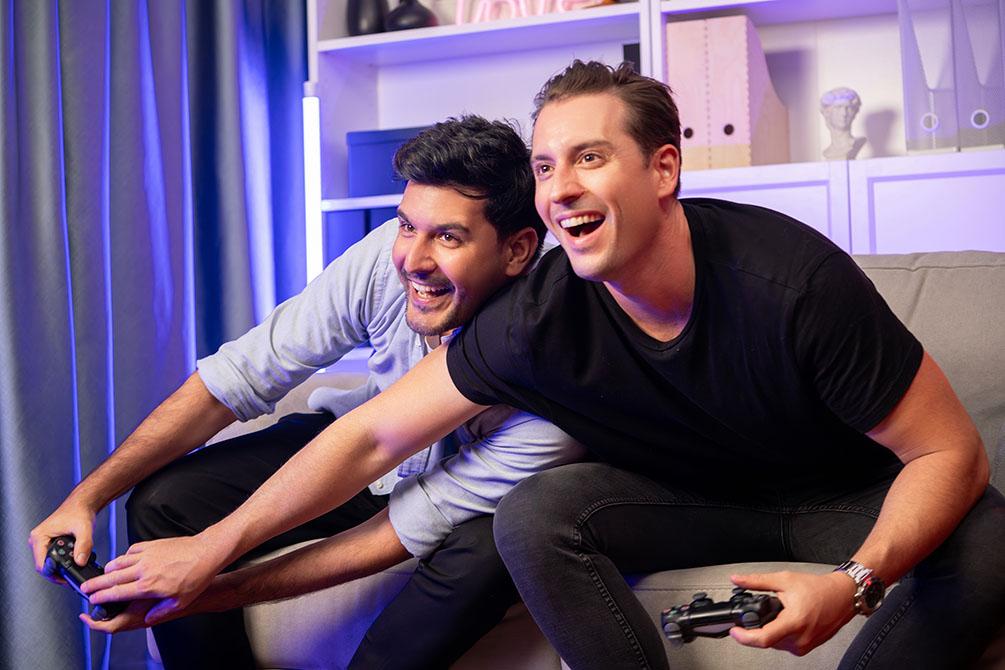
Written by: Mahmoud Demerdash
Date: 2025-07-14
Tracing the Journey of a Generation That Never Logged Off

For decades, video games were seen as a medium for children, a pastime for lazy afternoons and weekend sleepovers. But that stereotype has long been left behind; in today’s world, the gaming industry has grown up alongside the children who were introduced to it. According to the Entertainment Software Association, the average age of a gamer is now over 34, and the presence of adults in gaming spaces, from casual play to professional esports, has never been higher.
Many of today’s 30-something gamers grew up with consoles like the Super Nintendo, PlayStation 1, and Xbox. They didn’t just play games; they lived them. These were the kids who memorized cheat codes from magazines, who lined up at midnight releases, and who debated the best series like it was law. Now in their 30s and 40s, they’ve carried on their passion with them, not out of nostalgia alone, but because the medium itself has matured alongside them.
Single-player story games like The Witcher 3, Red Dead Redemption 2, or Baldur’s Gate 3 offer the kind of emotional depth, moral complexity, and narrative power that rival prestige television or award-winning novels. For the user, gaming is no longer about distraction; it’s about immersion. It’s an art, a story, and a challenge rolled into one interactive experience. These games offer players a portal into richly imagined worlds, places where the rules, values, and even physics differ from our own. In stepping into the boots of a monster hunter, an outlaw, or a wandering sorcerer, players aren’t just escaping reality; they’re wrestling with new moral landscapes, confronting hard choices, and experiencing lives far removed from their own, all while remaining grounded in deeply human emotion.
Competitive gaming has also been a massive draw for gamers, becoming a modern-day pastime for many adults, offering a structured and skill-based way to unwind after work. Titles like Counter-Strike, Call of Duty and League of Legends have cultivated massive online communities where players can test their reflexes, strategy, and teamwork in short but intense sessions. For those who once played sports or sought friendly competition, these games fill that gap, offering everything from casual matchmaking to organized leagues, all from the comfort of home.
The rise of the 30+ gamer is also a product of lifestyle shifts. Many in this age group now balance work, family, and responsibilities, but gaming remains their chosen escape. Unlike passive forms of entertainment, games offer active engagement and control, which may explain their appeal in a world that often feels chaotic and overstimulating. In the United States, recent surveys indicate that the shift toward staying in has become the new norm in America; 72% of adults now prefer spending time at home with friends over going out for nightlife. This reflects a nationwide trend; U.S. adults spent nearly an hour and a half more time at home daily in 2022 compared to 2003.

Platforms like Steam, PlayStation Network, and Xbox Live show high levels of engagement from players in the 30–44 age group. Whether it’s winding down after work with a few rounds of Call of Duty, building intricate worlds in Minecraft with their kids, or diving deep into co-op sessions of Helldivers II or Elden Ring, these players are carving out time for meaningful play. This generation also has the income to invest in high-end rigs, deluxe editions, and VR headsets, driving much of the industry’s growth. As a result, developers are increasingly catering to them, with mature storylines, challenging mechanics, and emotionally nuanced writing.
It’s not just casual gaming either. Adults are now front and centre in esports, content creation, and the business side of the industry. Esports pros like Daigo Umehara in fighting games or Peter “Doublelift” Peng in League of Legends have maintained high performance into their late 20s and early 30s — an age once considered “over the hill” in competitive gaming. Meanwhile, organizations like Team Liquid and FaZe Clan regularly feature older, experienced players in coaching and strategy roles, recognizing that raw aim isn’t the only asset in a game; tactical thinking and composure under pressure matter just as much.
On the content side, streamers like CohhCarnage, Shroud, and DrLupo, all in their 30s or older, have millions of followers and a steady presence across Twitch and YouTube. Their audiences include fellow adults who relate more to family life, mortgage jokes, and quiet grind sessions than the chaos of meme-heavy content. They’ve proven that being older in gaming doesn’t mean being irrelevant. In fact, it can be a strength.
Gaming as a Social and Mental Outlet
For many adults, gaming isn’t just a hobby; it’s a lifeline. In a world increasingly defined by digital connections, multiplayer games serve as spaces where friendships are either formed or continued. This is especially true among coworkers, who often find gaming to be a seamless way to extend their camaraderie beyond the workplace. After a long day of meetings, deadlines, and problem-solving, heading home to jump into a call with familiar colleagues offers something rare and valuable, a shared environment that’s both relaxed and stimulating.
These after-work gaming sessions allow people to maintain a sense of community while respecting the personal space and decompression time that adulthood demands. Rather than scheduling the logistical puzzle of a night out—commutes, reservations, schedules—friends can reconnect in a matter of minutes, with headsets on and stress slowly melting away. The gameplay itself becomes secondary to the act of showing up, being present, and sharing laughter, strategy, or even a bit of lighthearted trash talk.
What makes this dynamic powerful is its blend of intimacy and autonomy. Players are “together” without having to leave their homes. They can talk about the workday, vent frustrations, or simply enjoy a task-oriented form of socialization that doesn’t demand emotional vulnerability yet still strengthens bonds. In many ways, it mirrors how younger generations used to “hang out” at arcades or on neighbourhood stoops, but now it's in lobbies and Discord calls, reshaped by technology and adulthood.
These virtual gathering spaces help preserve friendships that might otherwise fade due to the pressures of modern life, such as careers, relationships, and parenthood. It allows for connection without compromise, turning gaming into a modern hearth where old friendships are stoked and new ones sparked. Gaming helps preserve connections across vast distances, which exist not just physically, but also as a result of how globalized and mobile our lives have become, with friends, family, and colleagues often scattered across cities, countries, or continents. Whether it's coordinating raids in Destiny 2, building communities in Final Fantasy XIV, or running organized matches in military sims like Squad, gaming provides structure, purpose, and camaraderie.
There’s even evidence to back this up: studies from the American Psychological Association suggest that moderate gaming in adults can enhance problem-solving skills, reduce stress, and improve mood regulation. Especially during the pandemic, gaming saw a boom among older adults as a tool for socialization and escape, not regression, but resilience. The COVID-19 pandemic marked a turning point in how people engaged with digital spaces, and gaming saw an unprecedented surge as a result. With lockdowns, social distancing, and remote work becoming the norm, millions turned to video games not just for entertainment, but for connection, stress relief, and a sense of routine. What began as a temporary pastime quickly evolved into a vital coping mechanism, an accessible, interactive way to maintain social bonds and escape the emotional weight of global uncertainty. For many adults, especially those isolated from coworkers, friends, or extended family, gaming became the bridge between solitude and social interaction. As the world paused, the gaming community expanded, and for many, it has become a permanent fixture of daily life.
Despite all this, some cultural stigma lingers. The phrase “grown man playing video games” is still used pejoratively in some circles, as if adulthood is only defined by sacrifice, not balance. But the numbers, the stories, and the industry’s evolution say otherwise. Today’s adult gamers are parents, professionals, creatives, and entrepreneurs. They game not in spite of being adults, but because gaming is one of the few spaces that allows for challenge, fun, growth, and connection all at once.
The evolution of gaming isn’t a trend. It’s the natural result of a generation that grew up with gaming and never saw a reason to stop. As the medium continues to expand into new genres, platforms, and technologies, it’s clear: gaming isn’t just for kids. It’s for anyone who wants to be part of an evolving art form, one that now spans lifetimes and can only be stopped by an even more revolutionary medium. Whether someone is logging in for an hour after work, competing in weekend tournaments, or teaching their kid how to land a perfect combo, they’re not just playing. They’re part of a global, multi-generational culture that continues to redefine what it means to be a “gamer.”





